Something magical happened in the last week as Penny Heiple and I traveled through Maine, Connecticut, Massachusetts, and New York. We found ourselves inside the dream of bioregional regeneration for the Northeast Forest of Turtle Island.
Our journey began in Norway, Maine where Roberta Hill welcomed us at the office of the Center for an Ecology-based Economy (CEBE). It was there that I took a photo of this wonderful decolonial map for North America.
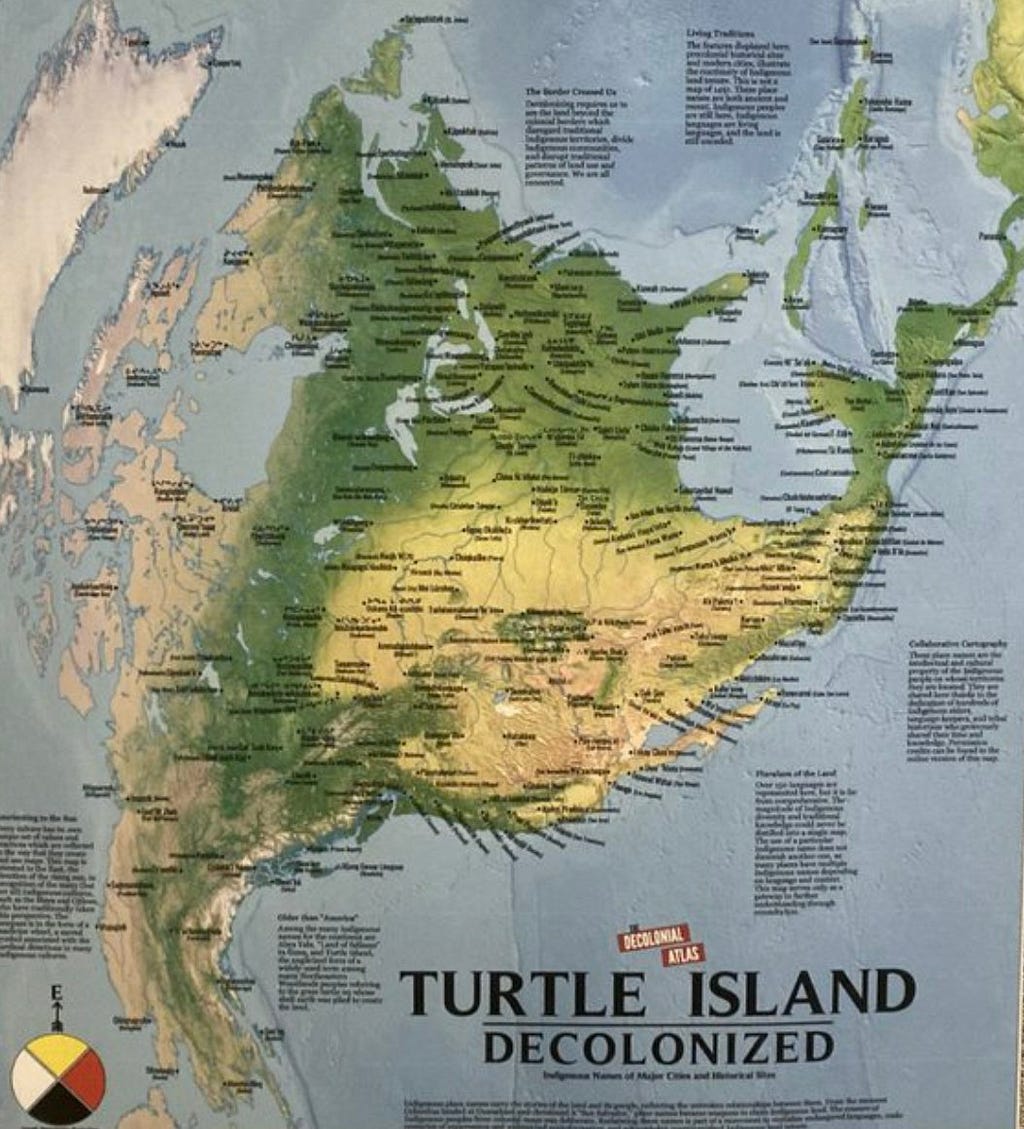
This felt appropriate because we were about to begin a journey of discovery into the Northeast Forest — something much bigger and more ambitious than what brought us to Maine in the first place.
Roberta had invited us to come so that we could begin making plans for a larger bioregional activation tour of the Northern Acadian Forest (located primarily in the western foothills of Maine). This tour was being planned for sometime in October of 2024.
At the same time, Keetu Winter of the Wellspring Commons had also invited us to do a “mini” activation for the Housatonic River and nearby watersheds in Connecticut and Massachusetts. This was what we did in the week following our time in Maine with Roberta.
Envisioning A Bioregional Tour of the Northeast
What began as an exploration of the western foothills in Maine quickly revealed itself as a larger landscape of possibilities — both figuratively and literally. We quickly realized that the forests of Maine are part of a continuous landscape of similar ecosystem typology that spreads across New York, Connecticut, Massachusetts, New Hampshire, Vermont, Maine, and southern Nova Scotia.
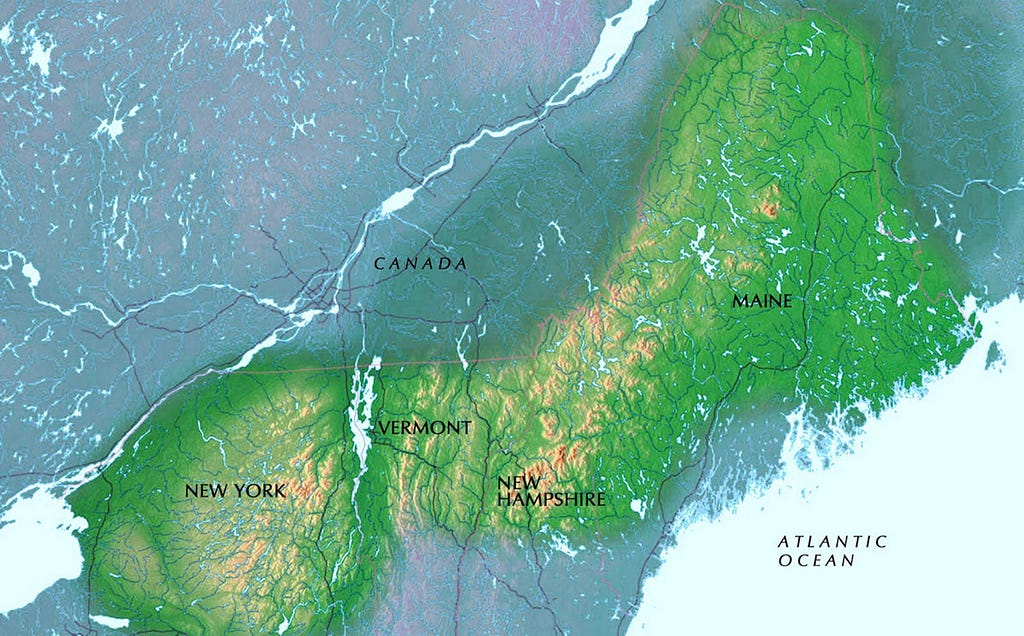
An incomplete map for the forests of New England that almost manages to be bioregional
Now we are starting to envision a bioregional activation tour that spans the entire forest landscape of the northeast — with local groups already invigorated by the talks, meetings, and workshops that we hosted in the last week. We can feel the power of this moment and honestly were quite surprised by the depths of history and capacity that we found along the way.
All that transpired in the last week is very complex, richly contextual, and full of potential. What I would like to do in this post is simply sketch a “play by play” of the overall themes as they unfolded during our trip.
Friday, March 29 :: Projects in Norway, Maine
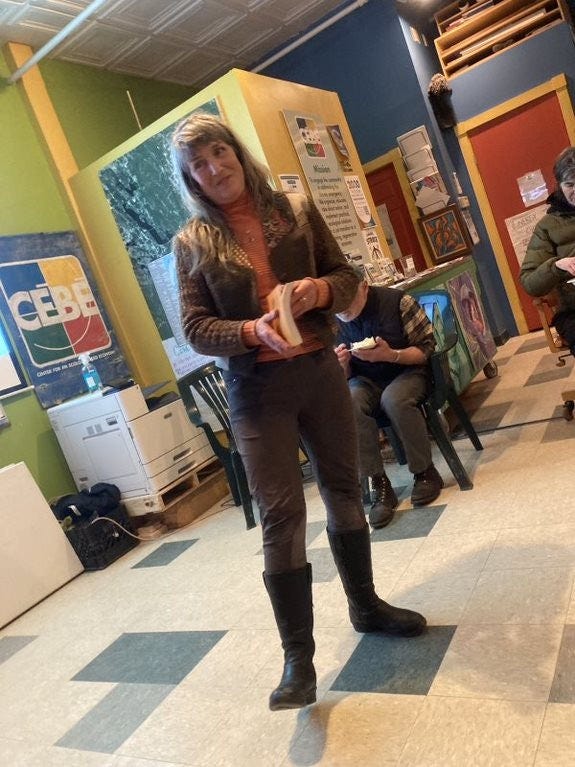
We were welcomed by Design School member, Roberta Hill in the CEBE office after making the drive up from Boston in the morning. Our afternoon was filled with site visits to the Lights Out Gallery, Roberts Farm, and Norway Community Garden.
What we observed were many elements of a bioregional learning center already organized with deep trust and local relationships.
Our day ended with a public talk about how to regenerate the forests of the northeast that was well attended — and that stimulated deep resonance with the idea of organizing at bioregional scales in the future.
Saturday, March 30 :: Traveling the River to the Sea
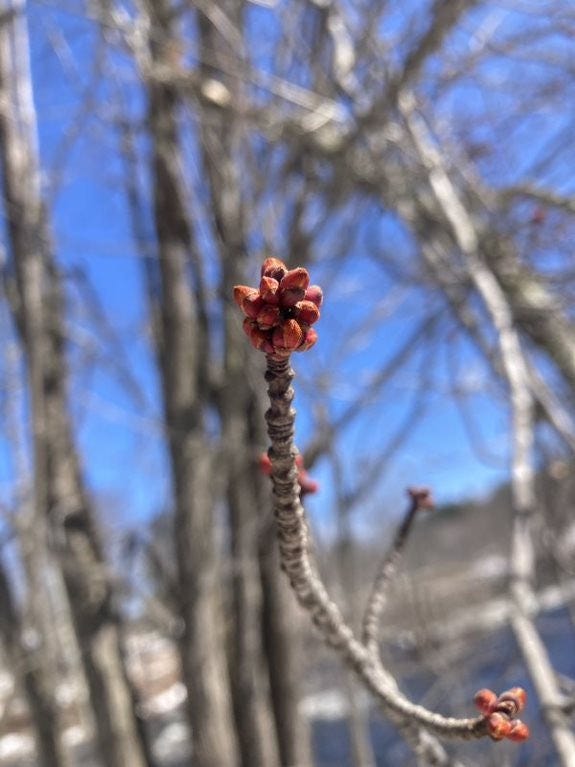
The purpose of our second day in Maine was to experience the Androscoggin River as it makes its way to the Atlantic Ocean.
We deepened friendships and explored many themes in a conversation that flowed like the river — continually branching and merging harmoniously with itself.
This included a visit to the largest organic farm in Maine where many local craft skills have been integrated for decades and a hike along Merrymeeting Bay where the two largest rivers in Maine find each other along the coastal fjords of this magical region.
The day ended with a special dinner at Roberta’s home and a conversation with their neighbors who are working on collaborative ownership structures for land trusts and community regeneration efforts. It was very special indeed.
Sunday, March 31 :: Headwaters and a Local Living School
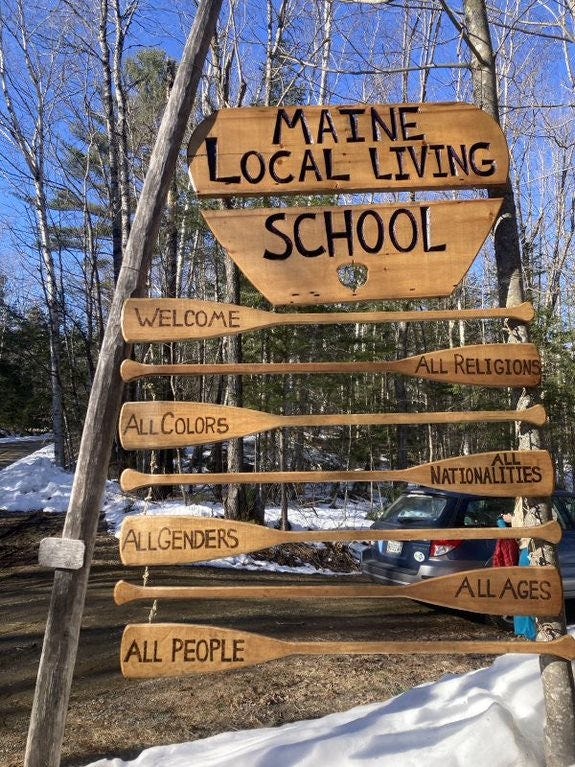
We continued our bioregional tour of the western foothills by traveling to the headwaters of the Androscoggin River in Umbagog Lake.
While driving across these epic landscapes filled with frozen lakes, white water rapids, and mountains carved smooth by ancient glaciers, we could feel the patterns of bioregional learning in the land itself.
We arrived in the afternoon at the Maine Local Living School to meet with a homestead family and about 15 youth who are learning to live deeply in relationship with local landscapes. The feeling of possibility for bioregional learning centers was palpable and real for all involved.
Monday, April 1 :: Strategies and Transitions
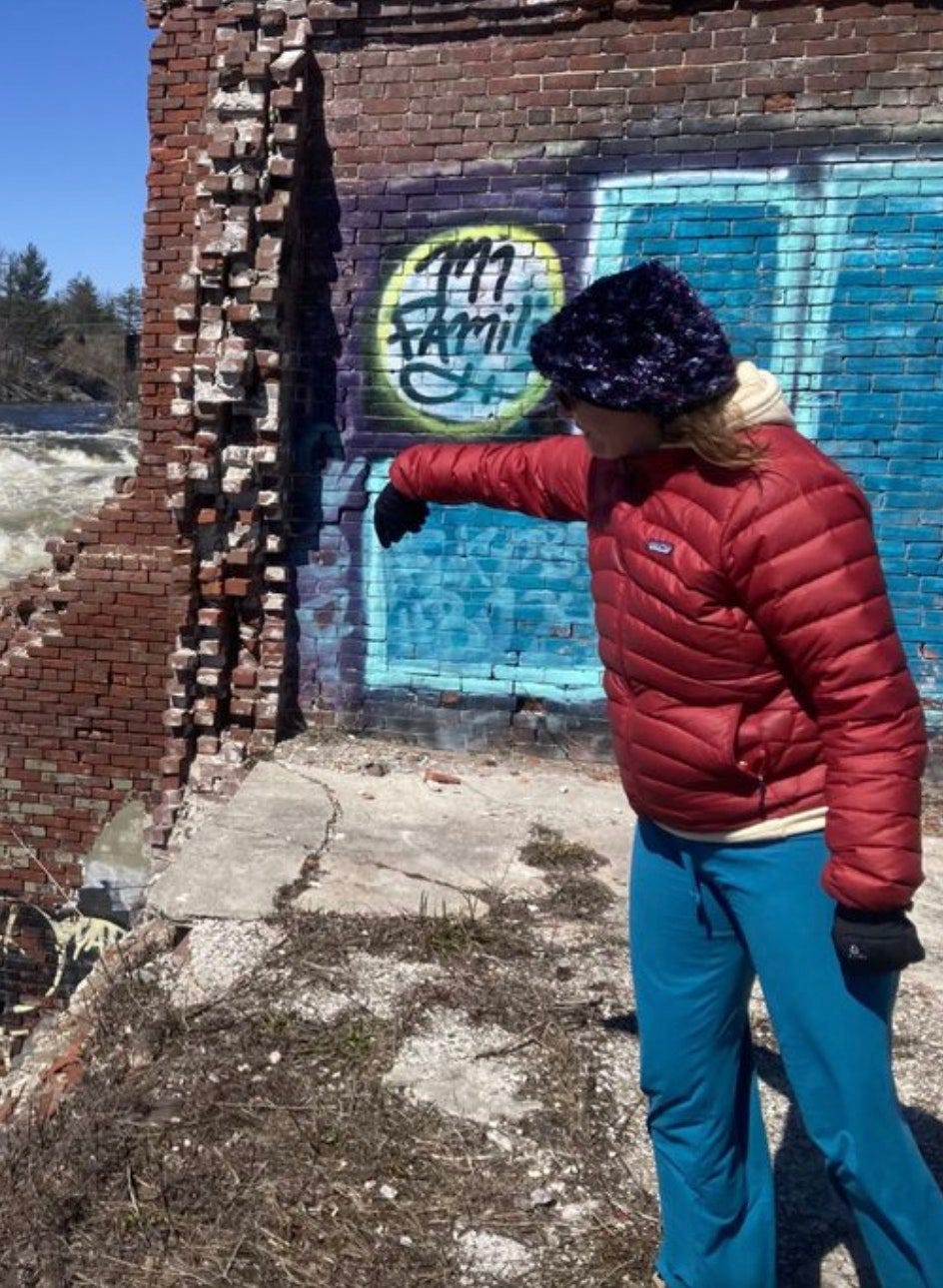
Our time in Maine was coming to an end. So much learning packed into a few short days!
We met with Roberta and the director of CEBE, a lovely man named Scott Vlaun, to clarify strategies for next steps to birth their own bioregional learning center for the Acadian Forest.
It had already become clear that what we were about to begin in Connecticut would open up the way for something bigger. How do we hold this story? What will be needed in the months to come?
A vision was beginning to emerge for a bioregional activation tour across the entire Northeast Forest region…
Tuesday, April 2 :: Havens for a Thriving Future
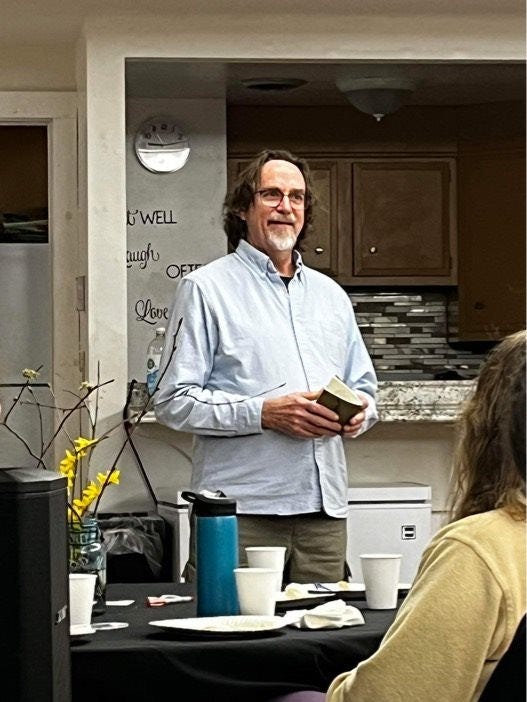
Our first day in Connecticut was in New Haven, organized by Nathan Bixby and Kerstin Santa of Havens for Thriving Futures. They have been promoting bioregionalism alongside the New Haven Bioregional Group for many years.
We spent the morning with Keetu Winter and Chez Liley to lay out our vision for working with Wellspring Commons over the next few days. Then we went to Southern Connecticut State University to speak about bioregional regeneration with a classroom full of business and sustainability students.
Our evening was devoted to meeting with about 50 community leaders in the New Haven area who want to organize around these themes. I gave a talk that helped mobilize deep alignment and energy among them.
Wednesday, April 3 :: Initiating the Wellspring Cohort
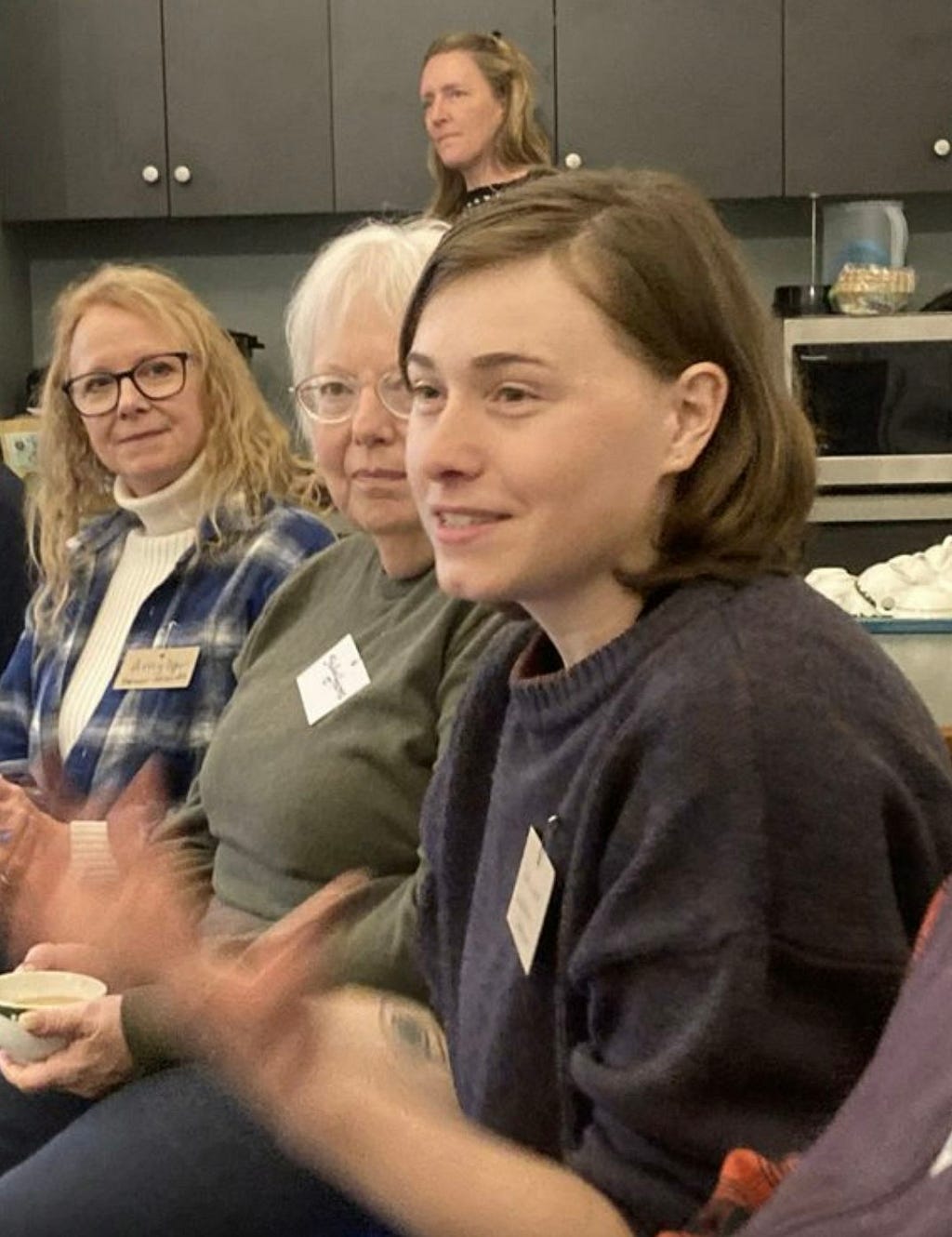
This was the gathering of about 30 participants who together are beginning a multi-month process of bioregional weaving around the vision of Wellspring Commons.
Keetu and Chez have been working hard to protect a 650 acre piece of land that would make an ideal location for their own bioregional learning center. We gathered with community leaders working with land trusts, indigenous knowledge, and a diversity of regenerative practices for a full-day workshop on “Bioregioning 101.”
Among the participants were River Strong, Bill Baue, Marianne Connor, and Ben Roberts of the Connecticut Valley Bioregional Group. Members of the New Haven community were present as well. We could all feel the weaving unfold among people who can really take all of this to the next level.
Thursday, April 4 :: Climate Leaders in Great Barrington, MA
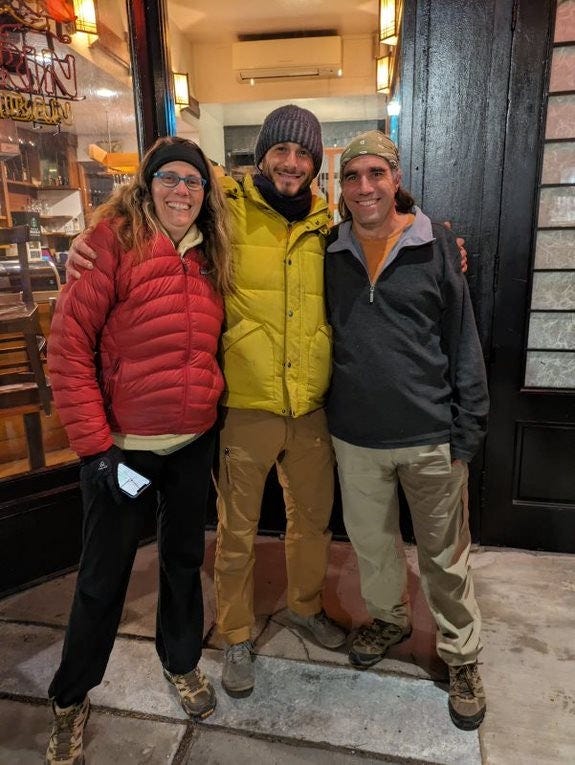
The final day of our tour was in Great Barrington, Massachusetts — meeting with a cohort of climate leaders organized by Lev Natan called the Alliance for a Viable Future.
Keetu is a member of this cohort so it felt natural to combine efforts with what is emerging in the Wellspring Commons.
Together we dove deep into planetary collapse and bioregional regeneration. Members of the cohort are committed to a one-year process where they each birth a “breakthrough” project that changes what is possible to achieve in their community.
By the end of the day, they were all ready to organize around bioregional regeneration. We culminated in the afternoon with a public talk — hosting 40–50 participants — who were invited to dream about the regeneration of the Northeast Forest.
Saturday, April 6 :: Another Learning Center in the Finger Lakes?
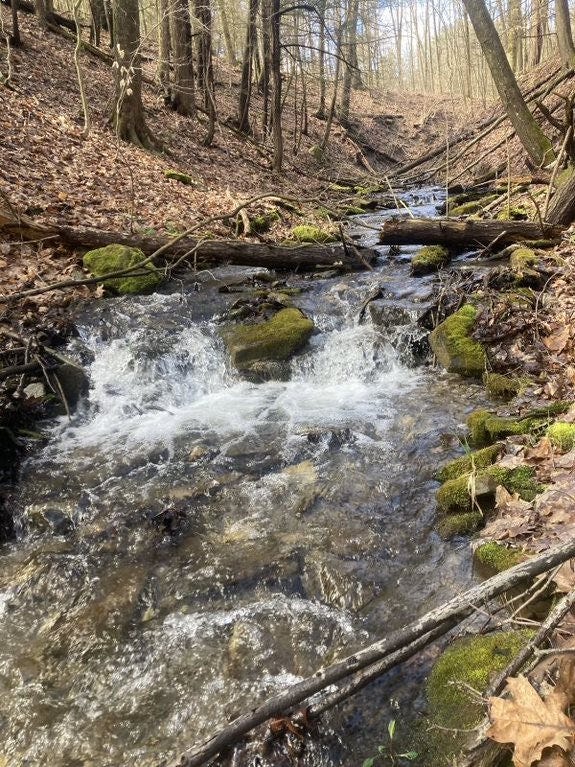
Penny and I came out of this week both invigorated and exhausted. We decided to go visit her family who own a cabin in the woods in the Finger Lakes Region of upstate New York.
We arrived with dreams swirling in our heads for how to weave bioregional learning across the entire Northeast. This opened up a space for exploring how a special piece of land on 44 acres could become part of a bioregional learning ecosystem.
We don’t know if this will emerge, but it felt important to share that as we integrate what we are learning into our bodies, it can’t help but spill over into our personal lives.
We can feel a larger activation tour coming into being at the regional scale for later this year. And we are beginning to sense into what it might mean for different field sites and local projects to organize into a bioregional network of learning exchanges for the Northeast forests of Turtle Island.
Weaving with the BLC Learning Journey
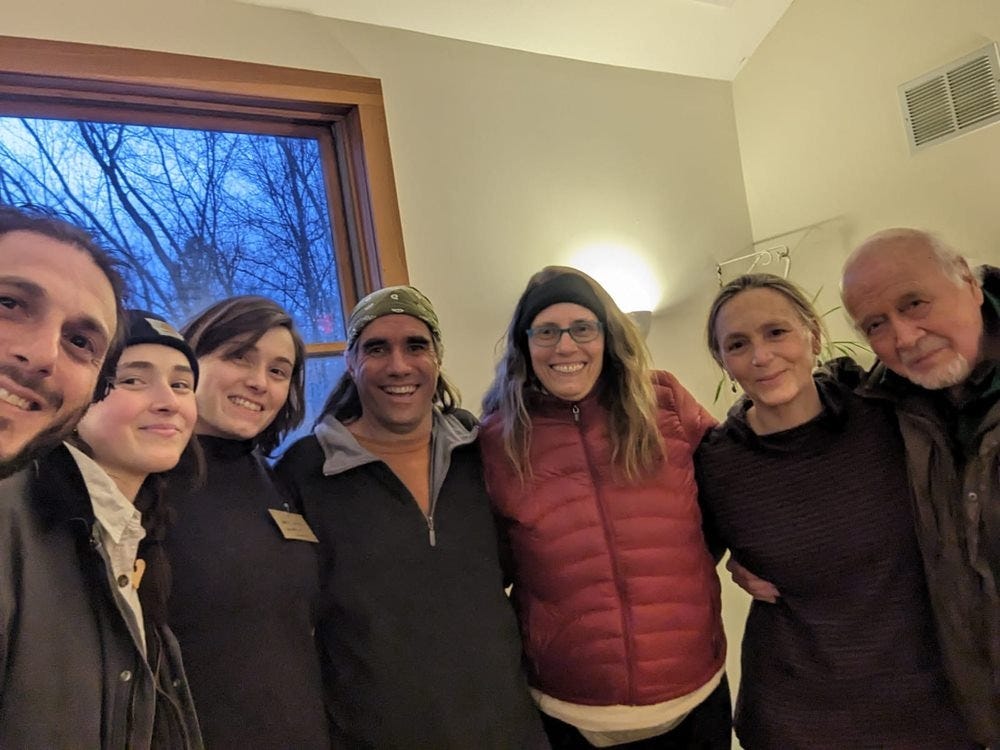
While all of this was happening, there was the second webinar in the Birthing Bioregional Learning Centers learning journey that introduced the concept of a bioregional learning center. A design session was hosted to begin exploring this theme more deeply. A special shout-out to Susan Bosak and Brian Puppa for hosting the webinar and to Roberta Hill for hosting the design session.
We can feel the resonance between what is happening online and all that is emerging on the ground. Our intention is to actively weave the real-world emergence of bioregional learning centers with the online supports for bioregional exchanges in the Design School. This was role-modeled during our trip throughout the Northeast in the last week.
It is palpable to us how all of this is coming together so organically. Now we can begin envisioning the activation tour for the fall as a process that touches the learning journey in ways that may be difficult to put into words at this moment. You can still invite more friends to join the Design School and participate in the learning journey. Together we can weave many communities around the world.
Please share your thoughts and feelings in the comment thread below. And a HUGE thank you to Keetu, Chez, Roberta, Nate, and Lev for organizing all of these events!
Onward, fellow humans.
Joe Brewer is co-founder of the Design School for Regenerating Earth.
Tagged with :







